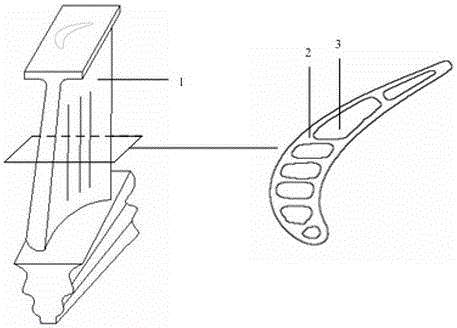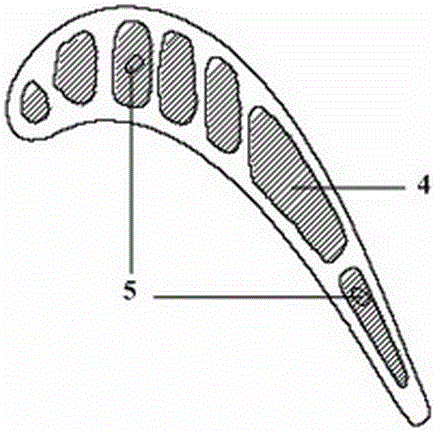Neutron radiography detection method for residual core of hollow turbine blade
A technology of turbine blades and radiography, which is applied in the fields of material analysis using wave/particle radiation, measuring devices, and material analysis using radiation, etc. It can solve the problems of low detection efficiency, unsuitable for rapid detection of large batches of blades, and high detection cost. , to achieve the effect of high detection efficiency, high detection rate and simple operation
- Summary
- Abstract
- Description
- Claims
- Application Information
AI Technical Summary
Problems solved by technology
Method used
Image
Examples
Embodiment Construction
[0022] The present invention is described in detail below in conjunction with accompanying drawing, comprises the steps:
[0023] (1) Carry out X-ray inspection on all the blades to be inspected to eliminate casting defects and cooling channel blockages.
[0024] (2) Distill pure water to obtain distilled water, and use a water container with a pressure valve to collect enough distilled water.
[0025] (3) Prepare a plastic water container containing multiple water tanks. The length of a single tank is 1.2 times the length of the blade, the width is 1.2 times the width of the blade, and the depth is 2-3 times the height of the blade. Distilled water is delivered to multiple sinks in plastic water containers up to 2 / 3 full.
[0026] (4) Put multiple hollow turbine blades horizontally and immerse them in different water tanks to ensure that each blade 1 can be completely immersed in distilled water. The immersion time is controlled at 5-10 minutes to ensure that the cooling cha...
PUM
 Login to View More
Login to View More Abstract
Description
Claims
Application Information
 Login to View More
Login to View More - R&D
- Intellectual Property
- Life Sciences
- Materials
- Tech Scout
- Unparalleled Data Quality
- Higher Quality Content
- 60% Fewer Hallucinations
Browse by: Latest US Patents, China's latest patents, Technical Efficacy Thesaurus, Application Domain, Technology Topic, Popular Technical Reports.
© 2025 PatSnap. All rights reserved.Legal|Privacy policy|Modern Slavery Act Transparency Statement|Sitemap|About US| Contact US: help@patsnap.com



